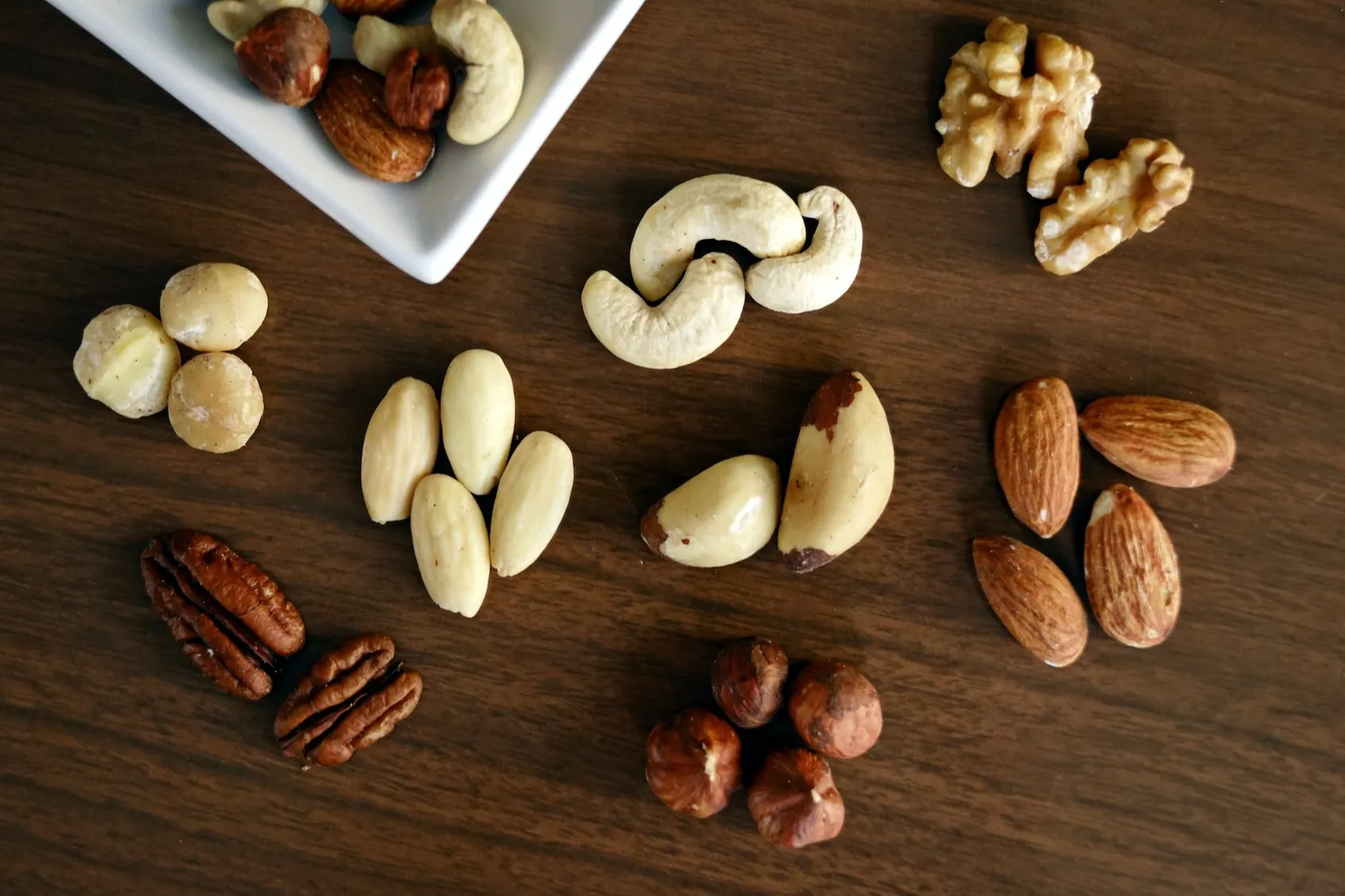Removing a whisk from a KitchenAid mixer can be time-consuming and frustrating, especially if you aren’t familiar with the appliance. Fortunately, there are some simple steps you can take to make the process easier and faster.
In this article, we will discuss how to remove the whisk from the KitchenAid mixer easily and quickly. Following these steps, you can quickly and safely remove the whisk without any hassle.
How To Remove Whisk From KitchenAid Mixer?
Removing the whisk from a KitchenAid mixer can be a surprisingly tricky task. While it may seem simple, anyone who has tried to take out a whisk from a KitchenAid mixer knows that it can be difficult and time-consuming. Fortunately, there are a few steps you can follow to make the process easier and quicker.
- First, unplug the mixer from the wall outlet. It is important to ensure the mixer is completely disconnected from power sources before removing the whisk.
- Next, locate the head of the mixer and the whisk attachment. On the head of the mixer, you will see a small, round opening. Insert the tip of a butter knife or screwdriver into the opening, and press down firmly. This will release the whisk from the head of the mixer.
- Once the whisk is released, you can easily remove it from the mixer. If the whisk is attached to a retaining ring, use a flathead screwdriver to pry the whisk out of the ring gently. To make the process easier, apply a small amount of cooking oil or Vaseline to the ring to help release the whisk.
- You can use a pair of pliers if the whisk is attached to a flat plate. Start by placing the pliers on either side of the whisk and gently pull them away from the mixer. Keep a firm grip on the whisk as you pull it away to prevent it from being damaged.
- Finally, remove any remaining pieces of the whisk from the plate. Use a damp cloth to wipe away any residue, then wipe down the plate with a dry cloth. Once the plate is clean, you can reattach the whisk to the mixer.
Following these steps, you can easily and quickly remove the whisk from a KitchenAid mixer. Just remember to unplug the mixer before starting the process, and use caution when prying the whisk away from the mixer to prevent damage. With the right tools and patience, you can quickly remove the whisk from your KitchenAid mixer.

Types Of KitchenAid Mixers
When it comes to KitchenAid mixers, there are various types to choose from, including stand mixers, hand mixers, and immersion mixers. Each type of mixer will require a slightly different approach to removing the whisk.
- Stand Mixers: Removing the whisk from a stand mixer is usually the simplest and quickest option. To do this, turn off the power to the mixer, then pull the beater bar away. This will cause the whisk to come free from the beater bar. Once the whisk is free, it can be washed and stored away until its next use.
- Hand Mixers: Removing the whisk from a hand mixer is slightly more complicated. The most common hand mixer type has a whisk attached to the mixer via a screw. To remove the whisk, the screw must be unscrewed. This can be done by using a screwdriver or a small wrench. Once the screw has been removed, the whisk can be taken off the mixer and washed.
- Immersion Mixers: Removing the whisk from an immersion mixer is relatively simple. All that is required is to turn off the power to the mixer, then pull the whisk away from the motor. This should cause the whisk to come free from the mixer, allowing it to be washed and stored away until its next use.
Benefits Of Using A KitchenAid Mixer
There are many benefits to using a KitchenAid mixer. Here are some of the most notable:
- Time-saving: A KitchenAid mixer can cut down the time it takes to mix and knead dough significantly, making it an excellent tool for anyone who frequently bakes bread, pastries, or other dough-based treats.
- Consistency: A KitchenAid mixer ensures that all the ingredients are mixed thoroughly and evenly, resulting in a more consistent final product.
- Versatility: With various attachments available, a KitchenAid mixer can be used for tasks beyond just mixing dough, including grinding meat, making pasta, and more.
- Hands-free: Using a mixer can save you the trouble of mixing ingredients by hand, freeing you up to focus on other aspects of your cooking or baking.
- Durability: KitchenAid mixers are known for their sturdiness and durability, making them a worthwhile investment lasting years.
Cleaning And Maintenance Tips For KitchenAid Mixers
Here are some tips on how to clean and maintain your KitchenAid mixer:
- Always unplug the mixer before cleaning or servicing it.
- Use warm soapy water to clean the attachments and the mixing bowl. Avoid using abrasive materials or harsh chemicals, as they can damage the finish of your mixer.
- To remove stubborn stains or stuck-on food, soak the attachments and the mixing bowl in warm soapy water for 10-15 minutes before cleaning them.
- Wipe the exterior of the mixer with a damp cloth and mild soap. Avoid using water or any liquid on the motor assembly.
- To clean the motor assembly, use a soft, dry cloth to remove dust or debris. Be careful not to get any water or liquid inside the motor assembly.
- Lubricate the moving parts of the mixer with vegetable oil or food-grade grease to ensure smooth operation.
- Store the mixer in a dry place and cover it with a cloth or plastic wrap to protect it from dust and moisture.
Troubleshooting Common KitchenAid Mixer Problems
KitchenAid mixers are an essential tool for any home baker or cook. However, like any appliance, they can experience problems that affect their functionality. Here are some common KitchenAid mixer problems and how to troubleshoot them:
- Mixer not turning on: Check if the mixer is plugged in and the power outlet is functioning properly. If both are okay, try resetting the mixer by unplugging it and waiting a few minutes before plugging it back in.
- Overheating: If your mixer feels hot, it might be overheating due to overuse. Turn off the mixer and let it rest for at least 20-30 minutes before using it again. If it continues to overheat, you should replace the motor.
- Mixer making strange noises: If you hear strange noises like grinding or clicking, the cause might be damaged gear. You can purchase replacement gear and replace them yourself or have a professional do it.
- Beater not reaching the bottom of the bowl: Adjust the beater height by turning the screw underneath the mixer head. Adjust until the beater touches the bowl at the lowest point.
- Bowl not locking into place: Make sure the bowl is properly aligned with the mixer base, and then press down firmly until you hear a click. If it still doesn’t lock in place, try adjusting the bowl height or replacing the latch.

How To Choose The Right KitchenAid Mixer For Your Needs?
Choosing the right KitchenAid mixer can be daunting, especially given the variety of models available. Here are a few things to consider when making your decision:
- Bowl size: The size of the bowl you need depends on your typical batch size. If you’re a casual baker, a 4.5-quart bowl is probably sufficient, but if you’re frequently making large batches, a 6-quart bowl may be more suitable.
- Power and speed: Consider the power and speed of the mixer. If you’re heavy, use a mixer with a more powerful motor and higher speeds.
- Accessories: Some mixers come with accessories, such as extra bowls, beaters, and dough hooks. Think about the accessories you’ll need before making your purchase.
- Price: KitchenAid mixers can range from around $200 to $600, so it’s important to consider your budget.
- User reviews: Finally, be sure to read user reviews to understand the pros and cons of different models. This can provide valuable insight into different mixers’ performance, reliability, and ease of use.
Comparing KitchenAid Mixers To Other Brands
Regarding kitchen mixers, KitchenAid is often considered a top brand. But how does it stack up against other brands? Here are a few points to consider:
- Quality: KitchenAid mixers are known for their durability and high-quality construction. Other top brands, such as Cuisinart and Bosch, also have solid reputations for quality.
- Price: KitchenAid mixers can be pricier, but many users feel they’re worth the investment. Other brands, like Hamilton Beach or Sunbeam, offer more budget-friendly options.
- Accessories: KitchenAid offers a wide range of accessories and attachments, making it a versatile kitchen tool. Other brands may have a more limited selection of accessories.
Ultimately, it’s important to consider your specific needs and preferences when comparing mixers. Do you need a high-quality, long-lasting machine? Do you want a range of accessories for different tasks? Do you have a strict budget? You can determine which brand is right for you by answering these questions.
Tips For Making The Most Of Your KitchenAid Mixer
If you’re lucky enough to have a KitchenAid mixer, there are plenty of ways to get the most out of it. Here are a few tips to help you make the most of your investment:
- Invest in attachments. The KitchenAid mixer is incredibly versatile but becomes even more useful when you have the right attachments. Whether you’re making pasta or grinding your meat, there’s an attachment to help you finish the job.
- Use the splatter guard. Mixing can get messy, but the KitchenAid mixer has a handy splatter guard that will help keep your counters clean. Make sure to use it every time you mix.
- Pay attention to the speed settings. The KitchenAid mixer has multiple speed settings for a reason. Make sure to use the appropriate speed for the task at hand. For example, high speeds are great for whipping cream but could overmix your dough.
- Don’t forget to scrape the bowl. The KitchenAid mixer is great at incorporating ingredients, but it could be better. Make sure to scrape down the sides of the bowl periodically to ensure that everything is evenly mixed.
- Store it properly. The KitchenAid mixer is a hefty appliance, so store it securely. Keep it on your countertop for easy access. If you need to store it in a cupboard, secure it with a strap or other safety device.
Common Accessories And Attachments For KitchenAid Mixers
There are several common accessories and attachments that you can get for your KitchenAid mixer. These include:
- Dough hook attachment: This attachment is perfect for kneading bread dough or making pizza dough.
- Flat beater: This attachment is great for mixing cake batter, cookie dough, mashed potatoes, and more.
- Wire whisk: This attachment is essential for whipping egg whites, cream and making meringues.
- Pasta roller and cutter set: This attachment set is perfect for making homemade pasta. It includes a roller that flattens the dough and a cutter that slices it into various shapes and sizes of pasta.
- Meat grinder attachment: This attachment enables you to grind your meats, making it easy to create sausage, meatballs, and more.
- Slicer and shredder attachment: This attachment makes it easy to shred cheese, vegetables, and more and is perfect for making salads, sandwiches, and pasta dishes.
- Ice cream maker attachment: You can easily create homemade ice cream in your KitchenAid mixer.

How To Care For Your KitchenAid Mixer To Ensure Optimal Performance?
Properly caring for your KitchenAid mixer ensures optimal performance and longevity. Here are some tips:
- Keep it clean: After each use, wipe down the mixer with a damp cloth and dry it thoroughly. Avoid using abrasive cleaners that can damage the finish.
- Use the correct attachments: Use the appropriate attachments for each task, such as the dough hook for breadmaking and the flat beater for mixing batters and icing.
- Don’t overload the mixer: Avoid overloading the mixer with too much mixture at once, as this can strain the motor and cause damage.
- Store it properly: Store the mixer in a dry and cool place, and avoid stacking heavy items on top of it.
- Get it serviced: If you use your KitchenAid mixer frequently, it’s worth getting it serviced by a professional every few years to ensure all the parts work properly.
How To Take Bowl Off, KitchenAid Mixer?
Removing the bowl from a KitchenAid mixer is a simple process that can be done in just a few steps:
- Turn off and unplug the mixer to ensure your safety.
- Tilt the mixer head back and push the lock lever to the left to unlock the mixer head.
- Lift the mixer head up to its highest position.
- Grab the base of the bowl with one hand and the mixer’s handle with the other hand.
- Twist the bowl counterclockwise while holding the mixer steady until the bowl lifts off.
- If the bowl is stuck, tap the bottom gently to loosen it, or push the lock lever back to the right and lock the mixer head in place before attempting to remove the bowl.
How To Remove Beaters From Hand Mixer?
Removing beaters from a KitchenAid mixer can be challenging if you’re unsure how to do it. But with the right steps, you can easily and quickly remove the whisk from your KitchenAid mixer.
- Turn off and unplug the hand mixer.
- Press the eject button or lever on the top of the mixer near where the beaters are attached.
- Gently pull the beaters out of the slots.
- If the beaters do not easily come out, try twisting them gently while pulling simultaneously.
- Once the beaters are removed, wash them with warm, soapy water and dry them thoroughly before storing them or using them again.
KitchenAid Mixer Beater Shaft Pin Stuck
Having a KitchenAid mixer is a great tool for any kitchen, but occasionally the whisk beater may become stuck to the shaft pin of the mixer. This is an annoying problem that can easily be fixed.
First, remove the bowl from the mixer, then unplug the power cord. Next, you should use a small flat-head screwdriver to carefully remove the pin that holds the whisk in place.
Once the pin has been removed, you can slide the whisk off the shaft. If the whisk does not slide off easily, you may need to use a pair of pliers to grip the whisk and twist it off the pin.
Once the whisk has been removed, you can reassemble the mixer and plug it back in. Before using the mixer, ensure the bowl is securely placed, and the whisk is properly attached to the shaft pin.
If the whisk is not securely attached, it could become loose and fall off during use, which could be dangerous. It is important to take the time to properly remove and reattach the whisk to the KitchenAid mixer to ensure that it works correctly and safely.
How To Remove KitchenAid Mixer Attachment?
Removing the whisk attachment from a KitchenAid mixer can seem intimidating, but it is easy and can be done quickly. The first step is to ensure the mixer is unplugged and the power switch is off with the bowl and whisk removed.
Then, locate the release lever on the front of the mixer and turn it counterclockwise until it is fully unlatched from the attachment hub. This will release the attachment hub and allow you to remove the whisk attachment.
Once the attachment hub is released, the whisk attachment can be removed. To do this, simply lift the attachment of the hub, ensuring the drive pin faces the back of the mixer. Then, pull the attachment away from the mixer, making sure to hold it firmly in place. Once the whisk attachment is completely removed, you can replace it with a different attachment or store it away.
Before you put away the whisk attachment, make sure to clean it thoroughly. Dust and debris can collect on the whisk wires, so removing any build-up with a damp cloth is important before storing. You can also use a soft brush or a toothpick to remove any stuck-on particles. Once the whisk is clean, store it in a dry, cool place away from heat sources.
How To Change KitchenAid Mixer Attachments?
Changing KitchenAid mixer attachments is a simple process. Follow these steps to change the attachment:
- Turn off and unplug the mixer.
- Lower the attachment by sliding the speed control lever to the lowest speed and then turning off the mixer.
- Turn the beater shaft to the left until the attachment is released.
- Take the attachment off the beater shaft.
- Insert a new attachment onto the beater shaft.
- Turn the attachment to the right to lock it in place.
- Verify that the attachment is secured properly before using the mixer again.
It’s important to note that accessories designed for different models of KitchenAid mixers may not be compatible. Be sure to choose attachments specifically made for your mixer model.
Conclusion
In conclusion, removing the whisk from a KitchenAid mixer is relatively quick and easy. All that is required is to unscrew the locking nut, pull the whisk off the drive shaft, and then remove the whisk. With the right tools, the entire process should take a few minutes. Following these steps will ensure the whisk is safely and properly removed from the mixer, allowing you to enjoy your KitchenAid mixer for years.
Frequently Asked Questions:
How do you get whisks out of a hand mixer?
First, unplug the mixer from the power outlet to remove the whisks from the hand mixer. Then, rotate the whisk attachment counterclockwise until it is loose enough to pull off. Gently pull the whisk attachment away from the mixer.
How do you remove KitchenAid attachments?
To remove KitchenAid attachments, turn off the power and unplug the machine. Then press the attachment release button and twist the attachment counter-clockwise until it comes off. You can lift the attachment straight up to remove it from the mixer.
What is the best way to clean a KitchenAid mixer?
The best way to clean a KitchenAid mixer is to use a soft damp cloth and a mild detergent or soap. Be sure to avoid abrasive cleaners, as this could damage the mixer. After wiping down the mixer, rinse with warm water and dry completely with a clean, soft cloth.
What types of attachments are compatible with KitchenAid mixers?
KitchenAid mixers are compatible with various attachments, including a flat beater, wire whip, dough hook, and flex edge beater. KitchenAid mixers are also compatible with various specialty attachments such as pasta makers, fruit and vegetable strainers, and more.
Is it possible to repair a broken KitchenAid mixer?
Yes, it is possible to repair a broken KitchenAid mixer. Depending on the type and extent of the damage, a professional repair may be necessary, or you can make the repairs yourself.
How often should a KitchenAid mixer be serviced?
KitchenAid recommends servicing their stand mixers every three to four years, depending on usage. In addition, they suggest having them serviced after any major repair or when the motor starts to sound different.
